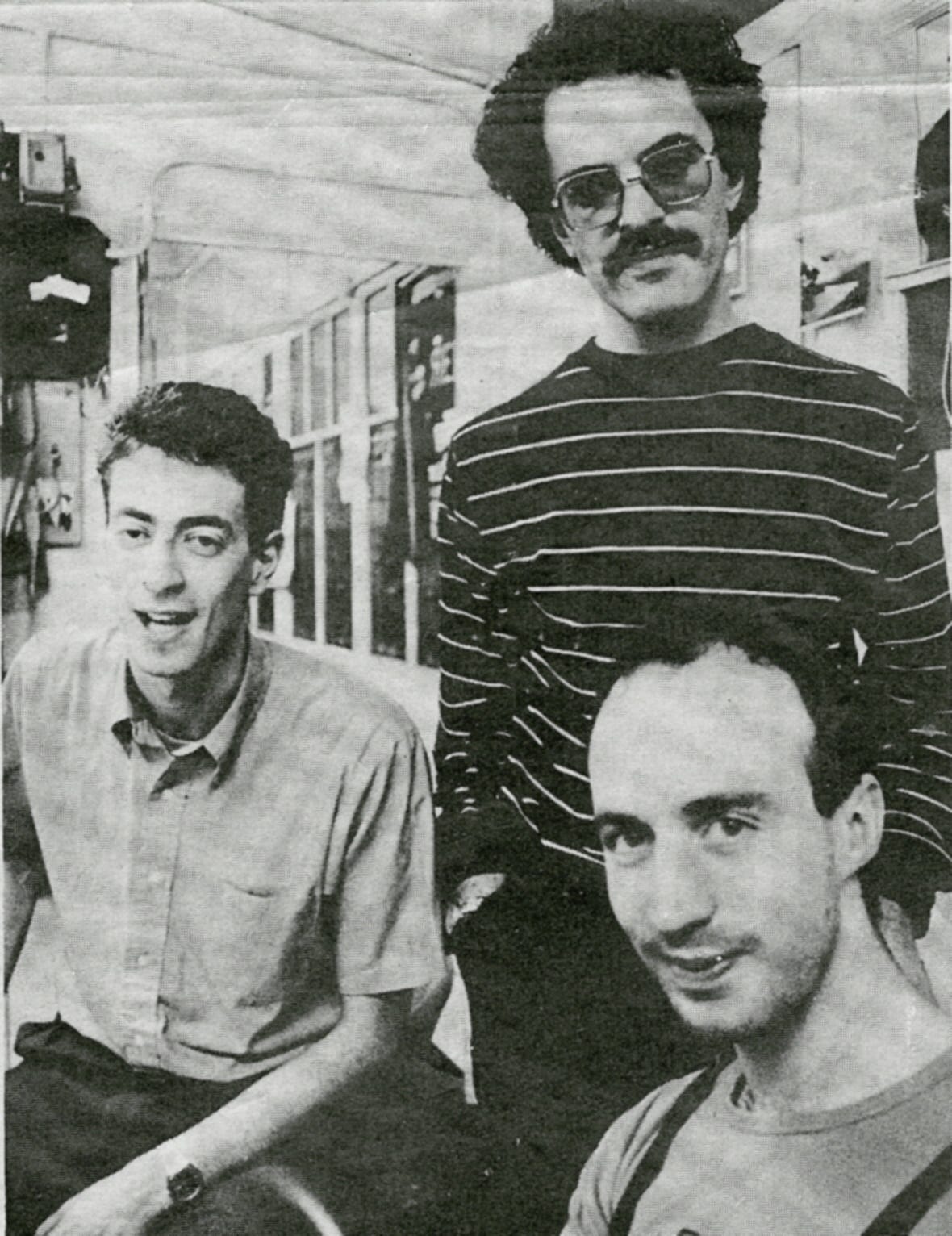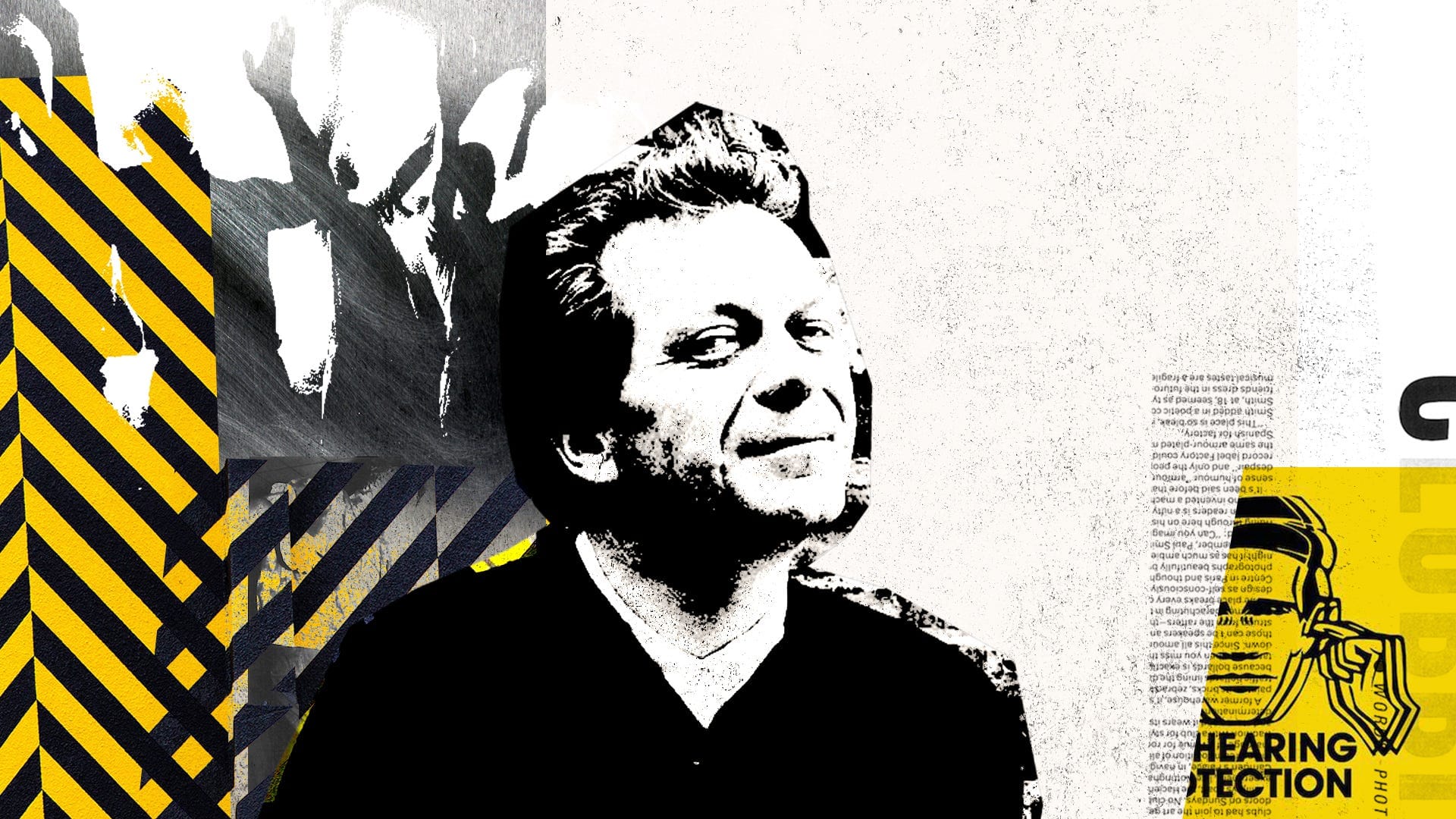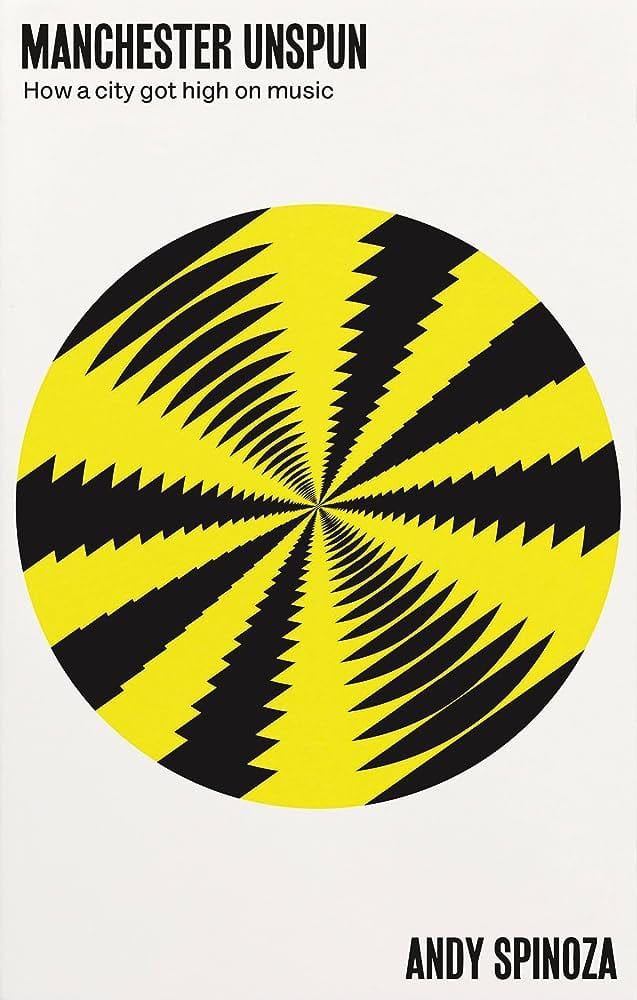By Joshi Herrmann
In 1983, three recent graduates from the University of Manchester rented an office in a decrepit building at the bottom of Portland Street and founded a workers’ co-operative, the primary purpose of which was to publish City Life, a new alternative magazine covering Manchester. The magazine was aimed at “people who felt, as we did, that the established Manchester media was biased, shallow and reactionary,” writes Andy Spinoza, one of those three media musketeers.
The first edition, however, was a fiasco — a “hideously dull front cover” (which showed a group of boys watching a computer screen) meant that of the 10,000 printed copies, just a thousand were sold. After that setback, the founders (who also included journalists Ed Glinert and Chris Paul) worried they might not survive until edition two, but in the end, City Life thrived as an independent entity for five years and never missed one of its fortnightly issues. It was kept afloat by ads from bars, theatres, wholefood shops, futon suppliers and nightclubs — in particular, the Haçienda, which consistently took out large ad slots. But it also succeeded because it captured something of a new energy stirring in Manchester — a vehicle through which young journalists could make their names (Mark Kermode was a member of the co-up) and make fun of the bastions of Mancunian social conservatism.
Writing a cover story for an edition of City Life in 1986, Spinoza interviewed the racist stand-up comedian and club owner Bernard Manning at his “world-famous Embassy Club” on Rochdale Road. To Spinoza, a young left-wing journalist from the South who had arrived in Manchester as a student in 1979, Manning was “a phenomenon to be analysed, not ignored.” Visiting the club in Harpurhey — and seeing “mile after grim mile of low-level housing” — Spinoza could see how Manning had “channelled the resentment and intolerance of many north Manchester residents living recession-battered lives”.

Spinoza’s book Manchester Unspun has a subtitle (Pop, Property and Power in the Original Modern City: How a City Got High on Music) and a cover image (featuring ravers at the Haçienda) that would seem to portend a tedious nostalgia-fest about Factory Records, featuring endless chapters of breathlessly delivered trivia about Alan Erasmus and the lesser-known bands managed by Tony Wilson. Such books certainly exist, but fortunately, this is not one of them. In fact, Spinoza has written something that feels more like a chronicle of modern Manchester — an engrossing, meticulous account of how the city has changed in recent decades, from the perspective of one of its most plugged-in observers.
The book came out earlier this year, and I interviewed Spinoza on stage at one of The Mill’s members’ events, a conversation we published on our podcast. Reading Manchester Unspun again recently in preparation for writing this piece, what struck me most was not the argument it makes about the influence of the Haçienda (we’ll get on to that in a minute), but how Spinoza depicts the Manchester that has been left behind: the world of Bernard Manning, described here as “the custodian, in many ways, of the old north Manchester belief system,” and the deplorable homophobia endorsed by everyone from the Happy Mondays to the Manchester Evening News.
City Life fell into administration in 1988, not long after Spinoza had left to take on more lucrative freelance work for the MEN (which soon bought City Life and revived it). He became the paper’s diary columnist, scribbling down quotes from celebrities in the early hours and occasionally landing great scoops. I always think you can pick out a journalist who spent their formative years on the diary pages rather than writing straight news or features — they tend to see the world in neat and memorable anecdotes, sometimes at the cost of the bigger picture. Spinoza regales us with hundreds of mini tales in this book, some of which might have been better left out in order to let the story breathe, but which together give a great flavour of the people and venues that have shaped the city.
“You’re writing for Ancoats Annie and Beswick Bob,” journalists on the late-1980s MEN were told by their editors, who had an uncompromising vision for who they were writing for, a stance guaranteed by who was chosen to lead the paper. “There was an unspoken belief that the senior editorial positions key to the paper’s soul had to be people from north Manchester,” writes Spinoza, who once submitted a speculative application of his own. Only they “could know in their bones the city’s real character, the hot buttons and dog whistles.”
The book mentions one excellent journalist called Paul Taylor who was Oldham born and bred and had all the necessary attributes to edit the paper. “He’ll never get the top job,” Spinoza was told by a colleague. “He’s far too intelligent. He might be from Oldham, but upstairs they think he’s a south Manchester type.”

Radio talk show hosts like Mike Sweeney and Allan Beswick “reflected the warm-hearted, inclusive Manc character,” Spinoza says, careful to include the caveat that “It would be wrong to paint the whole of north Manchester as illiberal, intolerant and reactionary.” But the book is unsparing in its treatment of the MEN — a newspaper “pandering to its readers’ prejudices”, most notably in 1986 after Greater Manchester Police’s deeply socially conservative chief constable James Anderton gave a speech about AIDS victims “swirling around in a cesspit of their own making”. Far from condemning “God’s Cop” (as Anderton was known in the press), the MEN’s editorial page described him as “a police officer and a deeply religious man,” and “a father and a lover of the human race.”
The editorial went on: “The Chief Constable has a right to his view… that AIDS is a question of morality, being no threat to those who live blameless lives.”
Spinoza was an early member of Factory’s legendary nightclub The Haçienda, which he calls “a guiding star throughout my professional career and my personal life”. He covered the club as a journalist, but also became a member of Wilson’s wider orbit — a good vantage point from which to narrate how the club’s bosses, “a colourful bunch of dreamers, druggies, misfits and intellectuals,” saw their experiment in pop culture spin out into something that became “impossible to control”.
To his credit, Spinoza maintained a critical distance from the world of Factory. When he was asked to write a chapter for an early-1990s book commissioned by Wilson to mark a decade of the Haçienda, Spinoza saw an opportunity “to get a few things off my chest”, noting the club’s role “as a space where some backwards attitudes had taken hold.” In 1991, the NME had “skewered Happy Mondays’ Shaun Ryder and Bez with their own prejudices,” (Bez was quoted saying: “I hate them. Faggots are disgusting,”) and Spinoza wrote a piece reflecting on the ugly side of the city’s music scene.

He was told his article couldn’t be included in the book, but City Life published it. “The best club in pop culture’s capital was often, at Madchester’s dizzy heights, a deeply unpleasant place, crawling with bimbos and their pistol-packing sugar Daddies,” he wrote (a point at which Spinoza himself sounds rather dated — did he speak to every dressed-up woman in the club before concluding that they were all thick as mince?). “We danced on, oblivious — oblivion is where we wanted to be — to the undercurrents.” Spinoza says he was reflecting a widespread feeling at the time “that intelligent discourse had lost out to fashionable monosyllabism.” He writes in Manchester Unspun:
Media influence and public take-up of the Mondays’ tar-thick ‘Manchestoh’ accents − which older Mancunians pinpoint as the accent of the Salford docks − came to be used by anyone striving to sound like ‘real’ Mancs. Interestingly, it was noticeable that an earlier Salford generation containing Sumner, Hook and poet John Cooper Clarke owned softer tones. Mondays’ slang expressions ‘top’, ‘nice one’ and ‘double plus good’ were being overused to the point of parody, encouraged by Wilson’s claims that Shaun Ryder’s lyrics were as incisive as Bob Dylan’s and profound as those of W.B. Yeats.
Are we persuaded by the argument advanced by Spinoza that the Haçienda was somehow the driving force that brought Manchester back from its late 20th-century nadir? He notes that the club’s founders intended not just to put on great parties but to “restore a sense of place” — somehow foreshadowing the preoccupation today’s local leaders and urbanists have with the idea of investing in “place-making”. Or to speak more practically, he thinks that the success of the Haçienda sparked the economic revival of the city centre, which has been critical to the revival of Manchester. As he writes: “Factory Records and the Haçienda, I submit, gave the kiss of life to a dying city, and sparked a chain of reaction of hubris, scandal, money and power politics still playing out today.”
I’m not particularly persuaded by it — several popular city centre venues preceded the Haçienda, and the turn-of-the-century phenomena of young professionals moving into post-industrial city centres is a trend that happened globally without the helping hand of Tony Wilson or a cottage industry in MDMA. Beyond expressing a sort of romantic sentiment, I’m not actually convinced Spinoza is persuaded either. He introduces the idea at the start of the book and it comes back at the end when he says that “the Haçienda was the first regeneration project of today’s Manchester–Salford revival, when the unloved centre was open to anyone to come and play.” But along the way, he cites plenty of more prosaic factors that likely played a much more meaningful role in the mechanics of Manchester’s re-emergence, even if they wouldn’t look as marketable in a pitch to a publisher.
One I found interesting was the push in the early 1990s to rid the city of a stifling licensing regime that had survived since the mid-1960s, when a “seething backstreet scene” of dance clubs, drinking dens and gambling had been wiped out by new regulations. “One minute it was like Las Vegas, says actor George Sewell, recalling that mid-century crackdown, “The next it was like Morecambe.” As a result of those rules — and the ways in which they were interpreted by police, magistrates and council officers — the city centre in the 1980s emptied after office hours with pubs shutting at 11pm and clubs at 2am. Club owners faced prosecution if people danced after that, and even in 1992, outdoor tables were not allowed in the city.

That all changed in the early 1990s when younger councillors — led by Labour’s Pat Karney — convened meetings with all the interested parties to develop a new consensus. Previously, police had effectively capped the number of venues with licenses at 220, but once they stopped objecting to new ones, the number quickly rose to 340. Spinoza notes that 75,000 visitors came into the city centre per weekend in 1997, twice the number from five years earlier. When I checked with officials this week, they said that there are now 711 late licenses in the city centre, most of which are bars, clubs and restaurants.
Another major factor in the story of Manchester’s renaissance is how the city was run. After his stint at the MEN, Spinoza became one of Manchester’s most sought-after public relations consultants, spinning for dozens of new property developments and restaurant openings. In this role, he came into contact with the small gang of people who really ran Manchester — led by council leader Richard Leese (who I profiled two years ago) and his chief executive Howard Bernstein. It was with these local leaders, their political allies and a coterie of trusted property industry figures that power really lay in Manchester — a group that Spinoza refers to as The City and “the Manchester mafia”.
“The first rule of The City was that you did not talk about The City,” he writes of the atmosphere that existed around Leese and Bernstein, a secretive and unyielding political culture that led the Financial Times journalist John McDermott to write in 2015: “There is something almost Chinese about the way Manchester is run.” Rumours of favouritism among a closed club — the idea that Bernstein in particular would only allow certain architects and planning practices to work on new buildings — is buttressed by an astonishing anecdote in the book. Spinoza writes:
In 2018, a developer who had emerged from a meeting with senior council planners to discuss his plans for a new Manchester hotel told me, ‘I can’t believe what I’ve just heard. I’ve just been told that I have to drop my architect and use one of three named firms.’
And yet, Spinoza can’t hide his admiration for how the council’s leadership — once described to me as a “benign dictatorship" — steered the city towards a new future while avoiding the instability and infighting that held other northern cities back. “The remarkable changes in the city overseen by Bernstein and Leese could never have been achieved without a politics stabilised by ironclad leadership,” the book concludes.

Reading this book, I kept thinking of one final factor, one that relates to Spinoza’s own biography — namely the reason he came here. Like so many people who have played instrumental roles in Manchester, Spinoza came to the city as a student and stayed. The universities and art schools — surely much more than the Haçienda — helped to constantly resupply the city with talented, idealistic people from all over the world during a period when many native Mancunians felt the need to decamp to London for better opportunities.
Spinoza and his two just-graduated co-founders at City Life, creating a new media company in a shabby office on Portland Street, were, in that sense, emblematic participants in the New Manchester, their restless energy and sense of how things needed to change a harbinger of what was to come.
Join our free mailing list to get this kind of coverage of Greater Manchester in your inbox every week. Hit the button below.
Andy Spinoza’s Manchester Unspun is on sale now. Spinoza is launching the paperback edition of the book at Waterstones on Deansgate, hosted by Stuart Maconie, on Friday 10th November — you can book tickets here.
What drove Manchester’s resurgence? Lend us your thoughts in the comments (members-only) by hitting the button below.

Comments
How to comment:
If you are already a member,
click here to sign in
and leave a comment.
If you aren't a member,
sign up here
to be able to leave a comment.
To add your photo, click here to create a profile on Gravatar.






